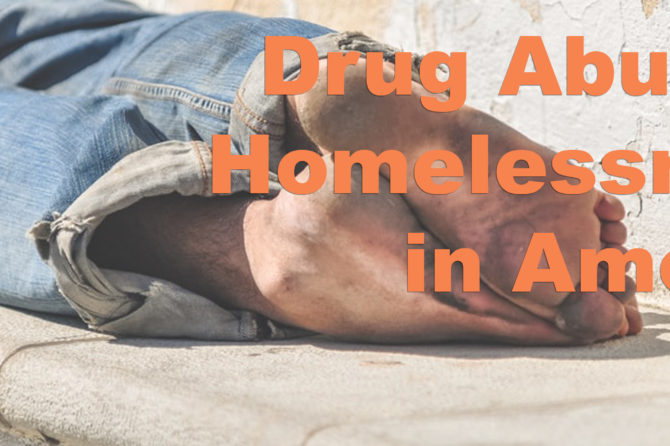
Drug Abuse and Homelessness in America
As somber as it may sound, there is a direct connection between homelessness and alcoholism and drug abuse. Facts show that homeless people often appeal to substance abuse to help them cope with their problems and situation. It’s a vicious circle that one can’t break without help.
Abuse and addiction are real issues that require treatment and counseling, something those who are the most vulnerable often don’t have access to when they need it the most.
How Are Homelessness and Drug Abuse Linked?
Drug abuse is both a cause and a result of homelessness. More often than not, these issues appear after people have lost their homes and are trying to find different ways to cope with the situation and be accepted by their community.
When One Problem Gets Worse, Does It Directly Affect the Other?
The relationship between homelessness and drug abuse is somewhat codependent. As mentioned above, drug abuse can be both the cause and the result of homelessness. People that are homeless and turn to drugs will have a more difficult time solving their housing problems. Likewise, for people that are already struggling with drug abuse, losing their home can trigger them to use even more drugs and more frequently.
What Is the Trajectory of Both in America?
Substance abuse has been and continues to be a persistent problem in the United States. During the 1980s, books and movies glamorized drugs like cocaine, crack cocaine, heroin, opiate drugs, and marijuana. Substance abuse decreased by the 2000s, but it is still a problem nowadays – in 2013, approximately 24.6 million Americans over the age of 12 had used a drug in the past month.
Homelessness was a significant issue in the US in the 1980s when the welfare cuts left many people on the street. The situation then gradually and slowly improved, as more and more sheltering initiatives appeared. The 2016 Annual Homeless Assessment Report states that on any given night in 2016, approximately 550,000 people were experiencing homelessness in the country, with a majority of 68% staying in emergency shelters, and the rest in unsheltered locations. Compared to more recent years, however, homelessness has declined by 15% since 2007.
Does Drug Abuse Lead to Homelessness or Does Homelessness Lead to Drug Abuse?
While drug abuse can lead to homelessness, it is not the only cause of it. Homelessness can occur due to a variety of other factors, such as poverty, escaping abusive homes, divorce, broken relationships, unemployment, mental illnesses, natural disasters, financial problems that lead to debt and an inability to find affordable housing, and so on.
What Government Programs Are Available for the Homeless Addict?
The first step for any homeless person is to overcome addiction before solving their housing issues. Of course, housing is a necessity for everyone, but in this case, a housing-first approach might not necessarily solve addiction issues as well.
Dealing with both issues at the same time can be difficult to manage, but there are recovery programs for homelessness and addiction that can get people the help they need and deserve. Treatment centers like this are available throughout the country, offering different approaches and amenities.
With drug abuse affecting 10 to 15% of homeless persons, the rehabilitation process is crucial to control both issues and make sure there will be improvements. A homeless person that struggled with drug abuse needs an alcohol- and drug-free home for their recovery as well as psychological and emotional support.
Which Areas of the Country Are Most Affected by Both?
Some of the states with the worst drug abuse problems are Michigan, Massachusetts, Arizona, Connecticut, Oregon, Rhode Island, Delaware, Colorado, and the District of Columbia. The highest percentage of teenage drug users and adult drug users are both found in Colorado, while most overdose deaths per capita happen in West Virginia, and most drug arrests are in South Dakota.
Washington, Georgia, Wyoming, Montana, Florida, Mississippi, California, District of Columbia, Hawaii and Oregon are some of the states with the highest rates of homelessness. The relationship between drug abuse and homelessness is still unclear, as statistics show few states that are amongst the most affected by both issues.
Since drug abuse can be both a cause and a result of homelessness, it is necessary that treatments address both issues. A stable living situation during and after receiving treatment will be more successful and will decrease the risks of relapse among patients.
Leave a reply